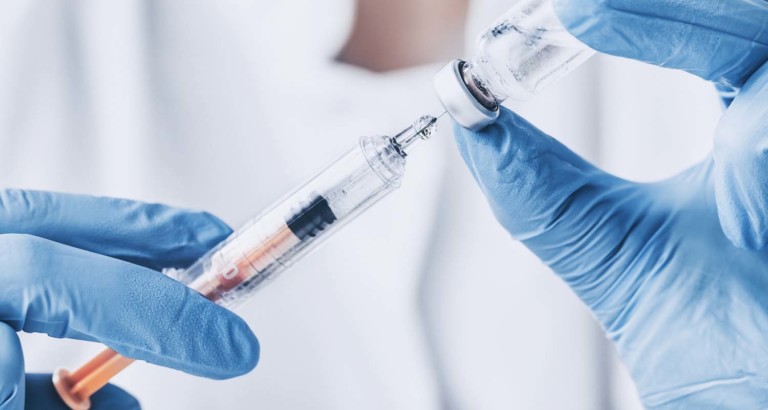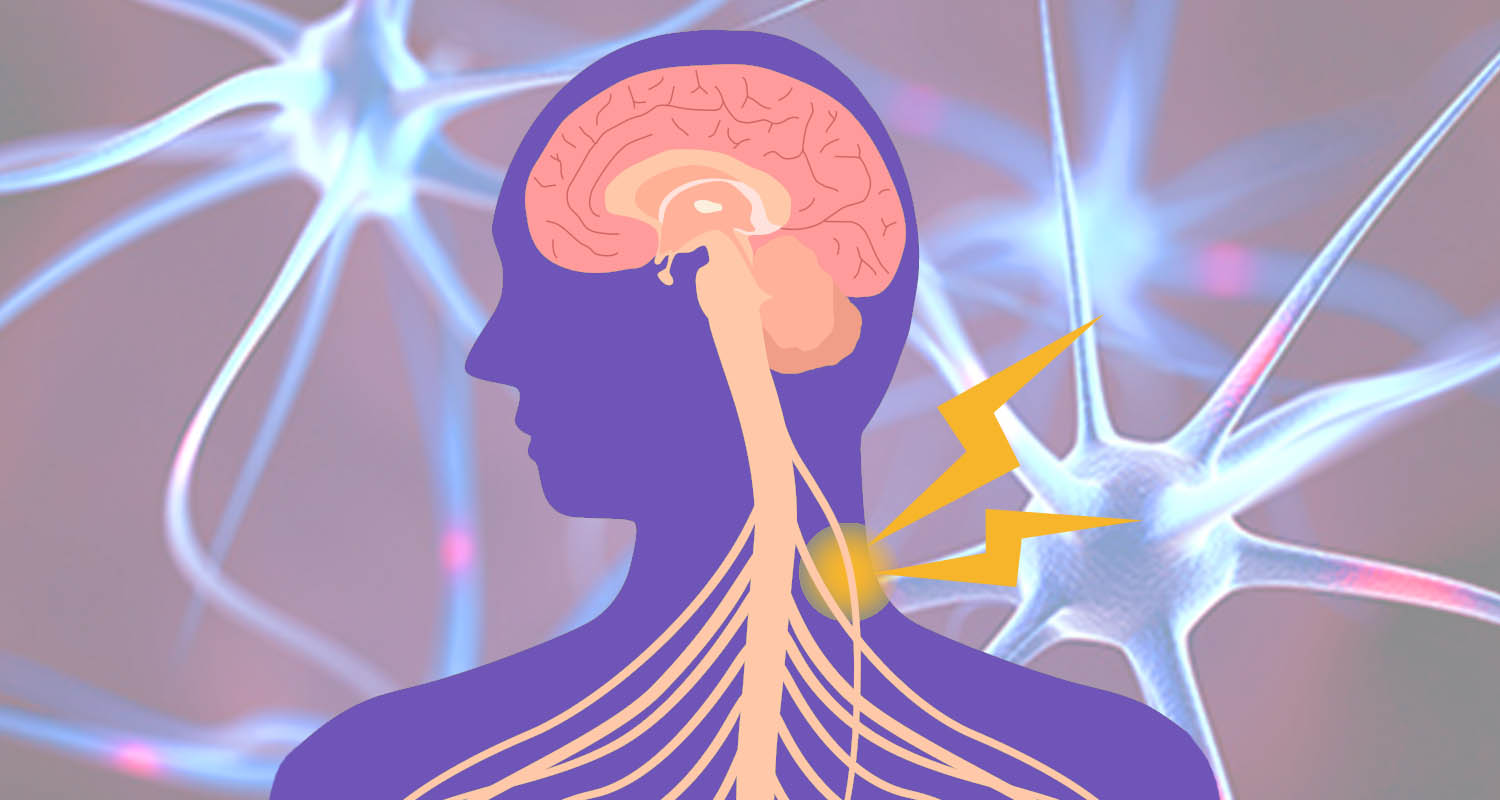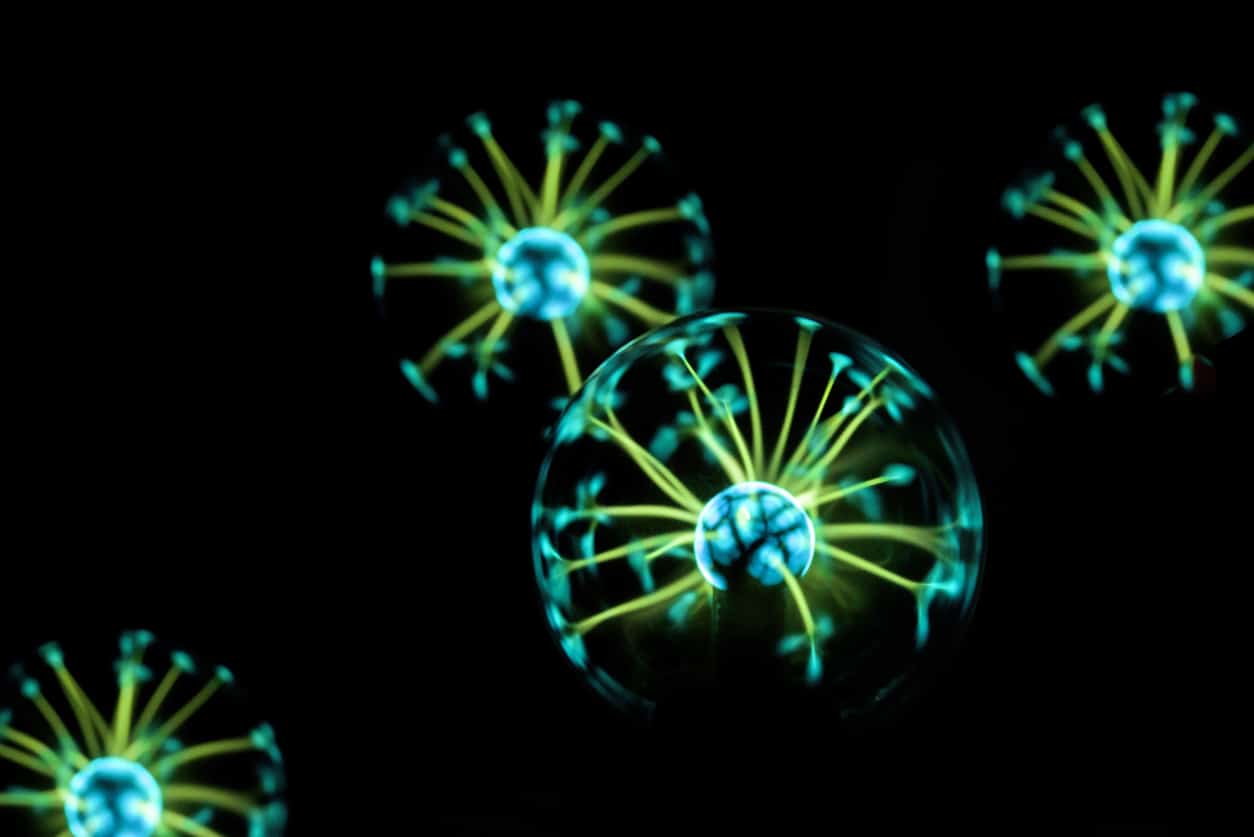
[tldr]
- Researchers are testing the effectiveness of a procedure called stellate ganglion block (SGB) to treat PTSD in veterans.
- Researchers have pointed to the increase of norepinephrine in the brain as a main mechanism of PTSD, and since SGB downregulates norepinepherine, you see a decrease in symptoms of PTSD.
- Here’s everything you need to know, including my experience with SGB — how it felt, and how it worked for me.
[/tldr]
Researchers are testing the effectiveness of a procedure called stellate ganglion block (SGB) to treat PTSD in veterans.
SGB involves numbing your neck and using ultrasound to guide a needle toward your stellate ganglion — the bundle of nerves in the front of your neck that controls your whole body’s fight-or-flight response. The doctor injects a medication into the area to temporarily block those nerves.
If SGB becomes an accepted and common treatment for PTSD, you will see a massive impact on the mental health of veterans when they integrate back into civilian life. Veterans come back from high-conflict deployments with symptoms including:
- Anxiety disorders
- Rage episodes
- Panic attacks
- Jumpiness
- Flashbacks
- Nightmares
- Sleep problems
The list goes on. The Veteran’s Administration reports 6,000 veteran suicides every year,[ref url=”https://www.mentalhealth.va.gov/suicide_prevention/data.asp”] and experts think that number is under-reported for various reasons. PTSD among veterans is a widespread mental health crisis, and what’s promising about SGB is that you can feel the effects immediately.
The science is emerging, but several studies point to SGB as an effective treatment for PTSD. Two small studies report that SGB worked for most participants, but to varying degrees.[ref url=”https://ajp.psychiatryonline.org/doi/full/10.1176/appi.ajp.2012.11111729″][ref url=”https://onlinelibrary.wiley.com/doi/abs/10.1111/j.1533-2500.2010.00373.x”] Some participants experienced relief to the point that they were able to stop using psychiatric medications.[ref url=”ghttps://onlinelibrary.wiley.com/doi/abs/10.1111/j.1533-2500.2010.00373.x”]
Results are highly individual and some people may require more than one treatment to get an initial effect, or the effect could wear off over a few months or years. In others, it’s one-and-done.
Researchers have pointed to the increase of norepinephrine in the brain as a main mechanism of PTSD. Trauma stimulates the release of norepinephrine, which triggers arousal, startle, and encodes fear memories.[ref url=”https://www.ncbi.nlm.nih.gov/pmc/articles/PMC3182008/”] When those nerves become sensitized to react more readily, you end up with more norepinephrine surges, and more fear encoded into your nervous system. Rinse and repeat until you have more fear than you know what to do with.[ref url=”https://www.sciencedirect.com/science/article/abs/pii/S0306987709000413″] When you can give your fear and panic response a break, you’re not constantly marinating your brain in norepinephrine, and the effect stops compounding on itself.
My experience with stellate ganglion block for PTSD

My friend Dr. Matt Cook did an SGB procedure on me a while back. It’s mildly uncomfortable for about three minutes, but totally worth it. Here’s what to expect.
The doctor does a smaller injection in your lower neck to numb you from the sensation of the real needle. Once you’re numb, an ultrasound tech scans your neck to find the target area, and to avoid things that you don’t want to poke with a needle, like major arteries. Then, the doctor injects the medicine right into the stellate ganglion. The whole procedure only takes a few minutes.
When he first did the injection, it felt like my neck, shoulders, and chest were melting. It’s totally bizarre — I remember feeling like I couldn’t swallow, but I could. When the medicine goes in, a wave of calm sweeps throughout your whole body. Every muscle you have relaxes, and you’re immediately less emotionally reactive. It works fast — the immediate effect is why it’s so promising as a PTSD treatment.
The weird numbness and melting feeling wore off within a couple of hours, but the quieted fight or flight response persists. It’s almost like your nervous system gets a much-needed break, which gives it a chance to re-calibrate how it reacts to things.
The result? It dampens your unconscious reactions to the world around you. You’re more even keeled, and you don’t get worked up by the things that rattled you before. Think of SGB as rebooting your fight-or-flight response.
You can hear Dr. Matt go into detail about the procedure in an episode of Bulletproof Radio (iTunes). He explains that the stellate ganglion can become hyper-sensitized by any trauma, not just war trauma. He describes the mechanism behind SGB and why it works.
“In a lot of people that have had PTSD or chronic pain, the fight or flight system can be overactive. What we do is we take very powerful numbing medicine or local anesthetic and we put it into that plane and put the fight or flight nervous system completely to sleep for about four to six hours. That has a very profound effect of turning off flight or flight so that people can begin to feel what it’s like to rest and relax,” says Dr. Cook.
RELATED: The Deifinitive Guide to Stress Management
Two for one: hydrodissection of the vagus nerve

Your brain tells your organs what to do through your vagus nerve, and your organs send regular status checks back. Your vagus nerve has a lot to do with your stress response as well, so you can hit them both at the same time. May as well — you’re getting poked anyway.
“When we turn the vagus nerve off [temporarily], that tends to reset the vagus nerve. Often we rest both [the stellate ganglion and the vagus nerve]. It’s fairly difficult to just get one by itself.”
If you think SGB will help you, open up a conversation with your doctor about it. Find a doctor who uses ultrasound to guide the needle, not fluoroscopy (continuous x-ray, like a movie). Ultrasound allows a more precise injection, and the doctor doesn’t have to use as much medicine.[ref url=”https://www.ncbi.nlm.nih.gov/pubmed/24760493″] Also, radiation interferes with your thyroid gland, especially if you’re in the growing population that has thyroid problems. Even though it’s a short procedure, you’re aiming for your neck, where your thyroid lives. You don’t need to give it a continuous radiation zap.










